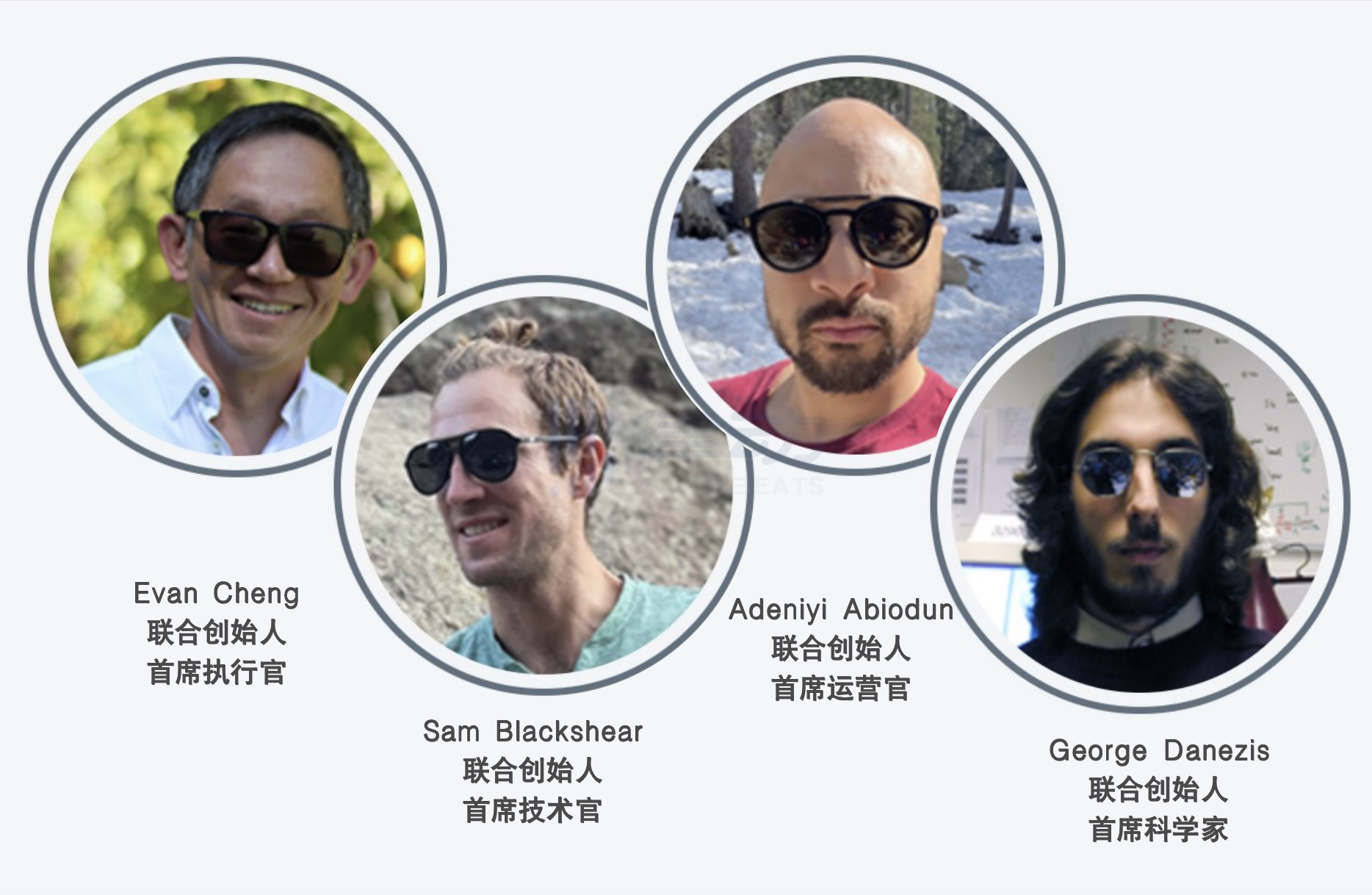Mysten Labs: A Web3 infrastructure provider from Facebook
Author: Crescent
Source: Rhythm Research Institute
Recently, Jack Dorsey stated that Web3 products do not belong to users, but to the VCs behind them, indicating the enormous returns achieved by firms like a16z in Web3 project investments. Following this, Elon Musk mocked that he "couldn't find Web3," drawing public attention and comments. Some even initiated a vote to discuss whether Web3 is a scam or the future.
Web3 is undoubtedly the future. The emergence of any new thing is inevitably accompanied by controversy, just as the development of Web2 was not smooth sailing. The technology of the internet is evolving rapidly, and its impact becomes gradually known as it penetrates deeper into people's lives. However, Web3 is just beginning to set sail, and it is not yet perfect, still facing certain limitations.
The first is scalability:
Web3 is decentralized, and user interactions need to be processed by miners on-chain and propagated throughout the network. Existing chains generally suffer from low throughput and high latency issues, leading to slow transaction progress. Coupled with limited capacity and high user demand, gas fees are becoming increasingly exorbitant, which to some extent limits the accessibility of existing applications. A month ago, Su Zhu, the founder of Three Arrows Capital, stated that despite previously supporting Ethereum, he has now abandoned it. The main reason is still the gas fee issue; behind the prosperity of the Ethereum ecosystem, the entry barrier is becoming higher. As he put it: newcomers can no longer afford Ethereum.
In short, inefficiency and high costs make it impractical for other projects requiring substantial on-chain computation or storage to build on the existing infrastructure. In the future, when large-scale high-demand projects need to be constructed on Web3, the performance requirements of the infrastructure will far exceed the current standards.
The second is programmability:
Today's smart contract languages are not cross-platform, and users need to learn a lot of additional knowledge, complex steps, and understand different software to interact with Web3 applications. This greatly reduces interoperability and prevents the formation of cross-platform communities. The development of smart contract languages is still in the early research stage, and the current smart contract languages are not secure enough. We often see news reports of economic losses due to contract vulnerabilities. On December 3, Rhythm reported that there had been 108 attack incidents on the Ethereum chain and 45 on the BSC chain. Currently, the losses caused by hacker attacks on Ethereum DeFi projects have exceeded $2.93 billion, while BSC DeFi projects have also suffered losses exceeding $650 million due to hacker attacks.
Moreover, the project believes that the fundamental limitations of existing crypto infrastructure hinder the widespread adoption of Web3, and the current languages are a serious obstacle to the mainstream adoption of digital assets and accessible smart contract development.
1. Solutions
As Web3 gradually progresses, project developers are continuously creating innovative new products, services, and business models. This inevitably involves the use of Web3 infrastructure. To address the current limitations of Web3, Mysten has developed several projects. The projects are launched in two ways: first, by collaborating with existing networks integrated with Mysten technology, and second, by launching on a component platform designed by Mysten.
The first product launched by the team is Narwhal, a high-performance mempool (also known as a transaction pool), aimed at solving the aforementioned scalability issues. Narwhal is under development, and one of its main features is its ability to integrate with any BFT consensus protocol. Through this highly scalable system, users can utilize crypto assets on a large scale, and the project has also developed a key loss protection protocol to help users better self-custody their assets.
The second project launched is the Move programming language, which many refer to as a technical highlight in Libra. The official statement indicates that Web3 needs a secure, cross-platform universal language that allows developers to seamlessly share contracts, tools, and expertise. The design of this language primarily addresses the programmability issues of smart contract languages, reducing the risk of vulnerabilities and lowering audit costs.
Mysten Labs is currently collaborating with two partners, Celo and Sommelier, and will subsequently deploy Narwhal and the Move programming language on their networks. According to their explanation, this will enable the open-source payment network Celo to achieve a throughput of over 140,000 TPS under global network latency conditions. Additionally, Mysten will add the KELP key recovery protocol for Celo, allowing Celo users to easily self-custody their assets and reduce the risk of losing keys. Through collaboration with this project, Sommelier may increase its transaction processing speed to 100,000 transactions per second (TPS), and integrating the Move language could bring smart contract functionality into the Cosmos ecosystem.
In addition to the above two projects, Mysten is also involved with NFT platforms. Most discussions about the Metaverse focus on user experiences brought by AR, VR, and other technologies for interacting with the virtual world. In contrast, Mysten's research focuses on issues such as ownership and programmability models of NFTs in the Metaverse. Currently, the problem with NFTs is that their early use was objectified, and many products simply add the concept of ownership to relatively static digital objects like images. For example, well-known projects like CryptoPunks and Bored Ape Yacht Club. Even many creative NFTs often cannot be taken beyond the world that designed them; users can at most extract NFTs from games to sell them, and nothing more.
Based on the above issues, Mysten Labs plans to launch a "next-generation NFT platform for the Metaverse" in 2022, allowing users to move assets across different virtual environments more easily without sacrificing functionality. The platform is based on an open network, also utilizing the Move language, which enhances programmability and is said to support transaction speeds of hundreds of thousands per second. The official hope is that by launching this platform, the technical limitations of today's platforms will be lifted, allowing anyone to interact with their NFTs without any restrictions, somewhat similar to showcasing NFTs, but with a more experiential aspect.
2. Project Background
Mysten Labs was founded in September 2021 by four senior engineers from Facebook's (now Meta) crypto department.
This includes Evan Cheng, who previously served as the R&D director of Facebook's Novi financial products division and worked at Apple for 10 years, currently holding the CEO position at Mysten. The other three core members, Sam Blackshear, Adeniyi Abiodun, and George Danezis, previously worked together at Novi Research (Meta's senior crypto R&D team).
The team possesses strong technical capabilities and focused on research related to the Diem blockchain, Move programming language, high-performance consensus and execution technologies, and solvency cryptographic proofs while at Facebook.

Recently, many former Facebook members have transitioned to the crypto field, with some joining well-known investment firm Andreessen Horowitz (a16z). a16z has recently placed significant emphasis on investments in Web3 infrastructure, and some major ecosystem builders are gradually improving their networks through collaboration with Mysten. Its technology can benefit many other Web3 companies. a16z believes this project will help its investments in other projects, leading it to lead the Series A funding for Mysten, along with participation from Coinbase Ventures, Redpoint, Lightspeed, and other institutions, Mysten Labs has completed $36 million in Series A financing.










